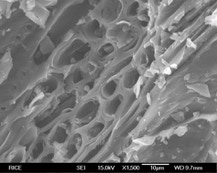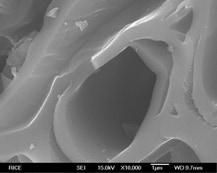Producing Biochars with Optimal Environmental Properties
Biochar amendments can increase soil fertility
Macropore structure of apple wood biochar (SEM image, 1500X)

Macropore structure of apple wood biochar (SEM image, 10000X)

Biochar amendments can increase the water-holding capacity of soils and improve nutrient retention
